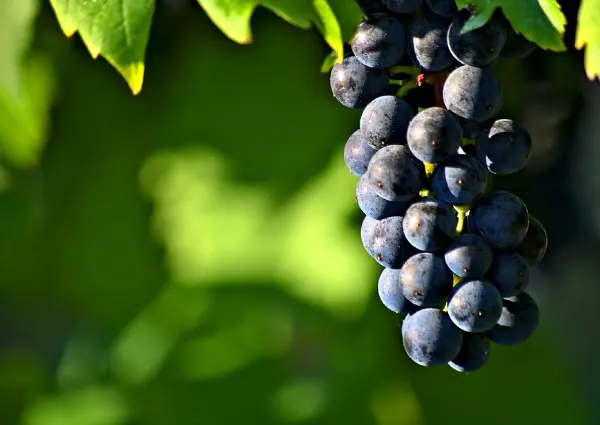Red wines represent the majority of wines made worldwide and are the most appreciated among all types of wine. The color of red wines varies between ruby and yellowish and it can be divided into three styles: light, medium-bodied and full-bodied.
History of Red wine
The initial production of red wine was present in many different nations and cultures. However, it is believed to have started in the Caucasus region of Georgia and Iran around 6000 BC.
Many ancient Egyptians left the tomb walls painted with information on how wine was produced. Years later, the Greeks and Romans created vineyards and began to cultivate the first grape varieties.
Characteristics of Red Wine
Within red wine we have several subcategories depending on the characteristics of each one.
Light Red Wine – It is a style of red wine that usually has fruity aromas. However, the acidity is usually high and the tannins discrete.
Medium-bodied Red Wine – Although the characteristics are similar to light red wines, they have their own aromas. They are not very robust, they manage to harmonize with various foods, above all red meats and pastas.
Full-bodied Red Wine – These are wines with a good dose of wood and great aging potential. They have more present tannins and harmonize with dishes rich in proteins and fats.
With regard to the production of red wine, it has several stages, with each winemaker having their own style and freedom to change some of them depending on their goal and the characteristics they want to highlight in the final product.
The stages of production of red wine are:
- Harvest – after harvesting (it can be manual or mechanical), the grapes are taken to the place where fermentation will take place.
- Grape sorting - some wineries sort the bunches manually, on a mat.
- Destemming – the grapes are placed in a machine where the function is to separate the berries from the bunch and leaves.
- Maceration – it is at this stage that the liquid absorbs all the components present in the grape skin. The winemaker decides how long maceration he wants to define, since this process will determine certain characteristics of the wine.
- Alcoholic fermentation – normally occurs in stainless steel tanks with controlled temperature, but the grapes can also be fermented in oak barrels. Fermentation basically consists of the yeast consuming the sugar from the must, releasing alcohol, carbon dioxide and heat.
- Clarification – in this stage the impurities in the wine are removed.
- Stabilization – the wine is placed at low temperatures for insolubilization and precipitation of the salts to occur.
- Aging – this process can take place in different types of containers, stainless steel tanks, cement tanks, oak barrels or in bottles and the wine's ripening time is determined by the winemaker. It is a step that is not mandatory, it is up to the winemaker to decide if he wants to do it or not.
- Filtration – the wine goes through the filtration process to eliminate solid compounds.
- Bottling – when the wine is finally put in the bottle.
Red wine durability after opening
It is impossible for the wine to not lose some of its characteristics the day after the bottle was opened, but it is possible to continue enjoying it for a few days as long as it is with the necessary care.
Red wine the more tannin and acid it is, the more durability it has. Usually wines last up to 3 days after the bottle is opened.
When storing it in the refrigerator, it must be kept in mind that the bottle must remain closed, ideally with the stopper itself, so that contact with air is kept to a minimum.
The most used grape varieties in Red Wine
Red wine is made with red grapes. These wines stand out for their intense and brilliant ruby color, obtained from natural pigments found in grapes. To extract these pigments, the grape must must be in contact with the skins during the fermentation process and the time in which they are in contact will determine the color of the wine.
Often, red wines are fermented until the yeasts consume all the sugar in the grapes, creating a dry wine with a high alcohol content, which can then be matured in oak, gaining body, new aromas and flavors.
The red grape varieties most used in wine making are:
- Grenache
- Touriga Nacional
- Cabernet Sauvignon
- Carménère
- Malbec
- Merlot
- Pinot Noir
- Sangiovese
- Syrah (Shiraz)
- Tannat
- Tempranillo

Ideal temperature for drinking Red Wine
It is important to serve the wine at the ideal temperature so that all its properties and characteristics are there.
Red wine, in general, can be served between 15º to 18ºC, but if we want to be more specific, the ideal would be:
Light or Medium Young Reds - 15º to 16ºC
Medium Aged Reds - 16º to 17ºC
Full-bodied Reds - 17º to 18ºC
Harmonization of Red Wine with food

The acidity and alcohol of red wines are characteristics that greatly influence the choice of harmonization. Tannins, on the other hand, have a strong presence, which makes them need a softer food to make a good contrast.
Red meat – the leaner and smoother the meat is, the less full the wine should be. However, if we are eating a steak, it is better to be accompanied by a full-bodied red wine.
White meat – the simpler the meat sauce and the way it is cooked, the simpler and smoother the wine should be.
Pizza – the pizzas made with cheese and tomato sauce combine well with red wines with high acidity. On the other hand, those made with chicken, ask for medium acidity wines and more moderate tannins.
Fish or shellfish – some reds contain tannins that when they interact with the iodine present in the fish "metallize" the wine's flavor, leaving a bitter sensation. It is ideal to choose softer and more acidic reds, preferably without having aged in oak barrels.
Pasta – it depends a lot on the sauce; if we are eating a simple sauce, it is better to choose a softer or medium red, with high acidity and moderate tannins.
You can find red wines on our website: click here.
 Portugal
Portugal Spain
Spain France
France Germany
Germany United Kingdom
United Kingdom Monaco
Monaco



